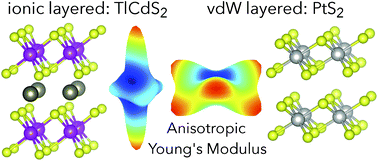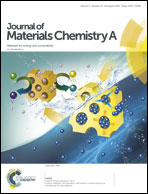Ionic vs. van der Waals layered materials: identification and comparison of elastic anisotropy†
Abstract
In this work, we expand the set of known layered compounds to include ionic layered materials, which are well known for superconducting, thermoelectric, and battery applications. Focusing on known ternary compounds from the ICSD, we screen for ionic layered structures by expanding upon our previously developed algorithm for identification of van der Waals (vdW) layered structures, thus identifying over 1500 ionic layered compounds. Since vdW layered structures can be chemically mutated to form ionic layered structures, we have developed a methodology to structurally link binary vdW to ternary ionic layered materials. We perform an in-depth analysis of similarities and differences between these two classes of layered systems and assess the interplay between layer geometry and bond strength with a study of the elastic anisotropy. We observe a rich variety of anisotropic behavior in which the layering direction alone is not a simple predictor of elastic anisotropy. Our results enable discovery of new layered materials through intercalation or de-intercalation of vdW or ionic layered systems, respectively, as well as lay the groundwork for studies of anisotropic transport phenomena such as sound propagation or lattice thermal conductivity.

- This article is part of the themed collection: 2018 Journal of Materials Chemistry A HOT Papers


 Please wait while we load your content...
Please wait while we load your content...
